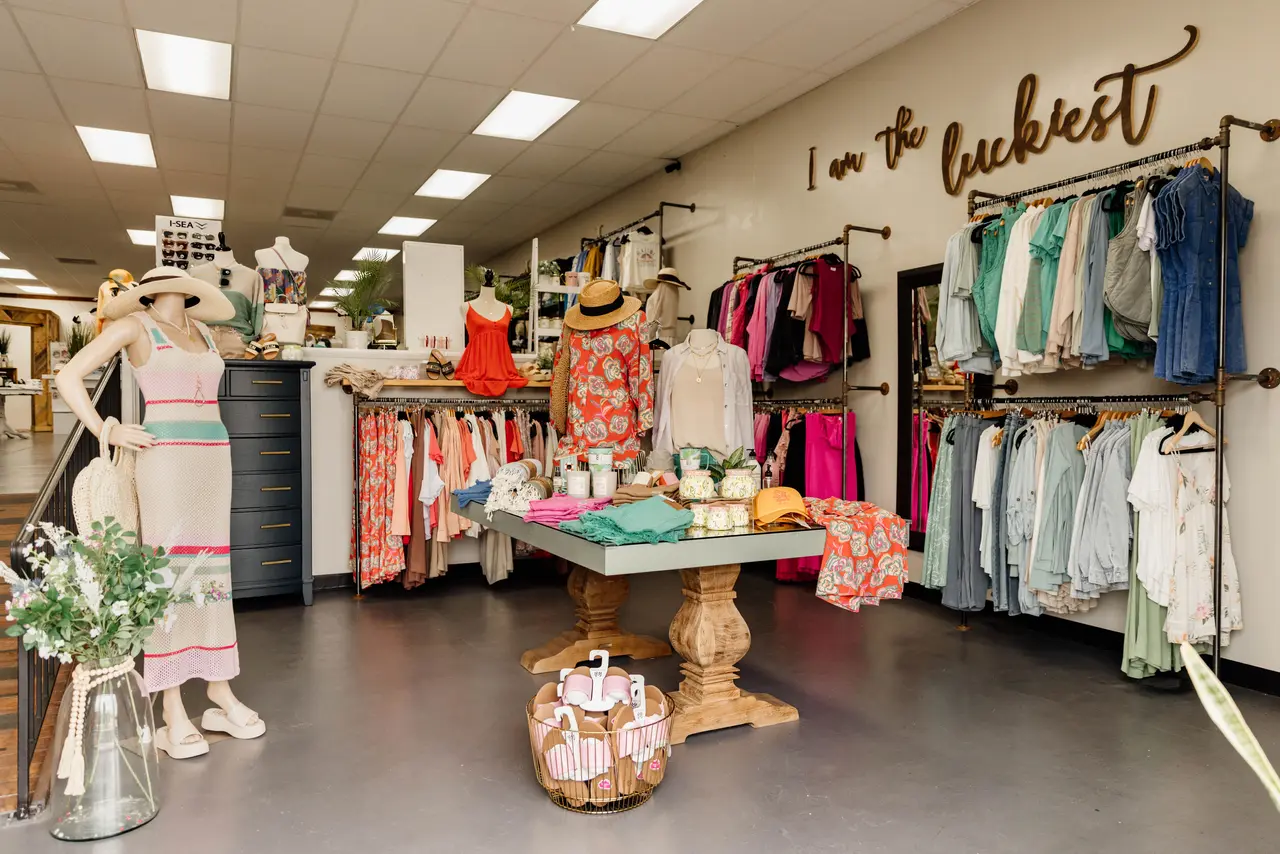How to Style Your Clothing with Boutique Fashion Finds
Lasting Fashion: Just How Eco-Friendly Clothing Is Shaping the Future of Design
As the style market faces enhancing analysis over its ecological influence, the surge of sustainable fashion provides an appealing choice that aligns style with ecological responsibility. Utilizing ingenious materials such as plant-based fabrics and recycled fibers, alongside innovative approaches like digital and 3D printing, developers are redefining what it suggests to be stylish in the contemporary age. Concurrently, the growing appeal of upcycling and thrift society is cultivating a change towards a round economy. Yet, how does this activity truly affect the future trajectory of fashion, and what obstacles exist ahead in its prevalent fostering?
Innovative Lasting Materials
As the apparel industry grapples with its environmental influence, cutting-edge lasting materials have actually arised as an important solution for lowering environmental footprints. Among the most appealing products are those stemmed from all-natural, eco-friendly sources, such as natural cotton, hemp, and bamboo. These products not just decrease reliance on nonrenewable fuel sources however likewise lessen hazardous chemical use and water consumption. Organic cotton, as an example, makes use of substantially much less water than traditional cotton and gets rid of the need for toxic chemicals, consequently protecting soil wellness and biodiversity.
In addition to plant-based materials, improvements in biofabrication have actually caused the growth of lab-grown fabrics. Mycelium leather, stemmed from mushroom roots, offers a flexible and naturally degradable option to pet natural leather. Its production causes considerably reduced carbon discharges and water usage, making it a much more sustainable choice for designer looking for to align with environment-friendly practices.
Recycled materials are likewise obtaining traction, with polyester made from recycled plastic bottles standing for a substantial development. This advancement not just diverts plastic waste from landfills and seas however also decreases energy usage contrasted to producing virgin polyester. Together, these materials emphasize the capacity for an extra sustainable style industry, paving the means for eco mindful style and production.
Eco-Conscious Production
Building on the technologies in lasting materials, the apparel industry is additionally re-evaluating its manufacturing processes to additionally minimize environmental influence. Key strategies consist of minimizing water usage, minimizing carbon discharges, and removing unsafe chemicals. By embracing closed-loop systems, manufacturers intend to recycle water and energy efficiently, considerably decreasing waste. The assimilation of sustainable energy sources, such as solar and wind power, right into manufacturing centers further stops reliance on nonrenewable fuel sources.
Another important aspect is the decrease of toxic chemicals typically utilized in dyeing and finishing textiles. Eco-conscious suppliers are changing towards plant-based dyes and waterless dyeing technologies, which not just safeguard neighborhood ecosystems but likewise enhance worker security. Technologies like digital printing lower material waste and power usage, offering a cleaner choice to traditional approaches.
With the development of blockchain innovation, business can currently give comprehensive understandings into their supply chains, ensuring ethical and environmentally friendly methods at each action. As the demand for eco-conscious products expands, manufacturers are urged to introduce, guaranteeing that the future of fashion is both fashionable and lasting.
The Increase of Upcycling
Upcycling, a transformative method in sustainable style, entails creatively repurposing disposed of products right into brand-new, high-grade items. This ingenious approach not just reduces waste however additionally diminishes the demand for basic materials, thereby minimizing the environmental effect of apparel manufacturing. By reimagining Visit This Link and rebuilding existing items, developers and style brands are able to instill creativity right into their collections while advertising environmental duty.

In addition, the upcycling movement has equipped independent developers and little businesses, who frequently lead in development due to their dexterity and imagination. By exploiting on the plentiful availability of extra products, these entities add to a round economic climate, demonstrating that style can be over at this website both trendy and sustainable. With upcycling, the market takes significant strides in the direction of a much more conscious and liable future.
Thrift Society's Impact
The expanding second hand society substantially reshapes the landscape of lasting fashion, highlighting the importance of conscious consumption. This social change motivates customers to embrace secondhand clothes, therefore decreasing the need for new garment manufacturing and minimizing environmental influence. Second hand buying not just extends the lifecycle of apparel however also decreases the carbon footprint connected with manufacturing, transporting, and taking care of apparel.
A crucial element of second hand society is its democratization of fashion. By using a wide range of designs from numerous eras at cost effective prices, thrift stores make style accessible to a broader audience. This availability cultivates a feeling of individuality and creativity, as consumers mix and match special items to curate tailored wardrobes without adding to the fast fashion cycle.
Furthermore, thrift culture advertises circularity visit the website in style, lining up with the principles of a round economic climate. As even more designers and consumers embrace second hand society, the fashion market is urged to adapt, incorporating lasting methods to meet the growing need for eco-conscious options.

Future Trends in vogue
Style's development is increasingly formed by technological innovations and sustainability-driven efforts. As customers become extra ecologically aware, the industry is reacting with groundbreaking innovations that redefine the future of style. One famous pattern is the surge of digital fashion, where virtual garments can be worn in increased truth environments, significantly decreasing material waste. This change not only satisfies the digital-savvy customer but likewise decreases the ecological impact typically linked with garment manufacturing.
Moreover, the assimilation of blockchain technology provides new possibilities in transparency and traceability, permitting consumers to confirm the sustainability qualifications of their garments. boutique fashion. This guarantees liability in supply chains and promotes moral sourcing practices. 3D printing is yet an additional technology that guarantees to transform making processes by enabling on-demand production, thus minimizing excess stock and waste
Furthermore, the advancement of bio-fabricated materials, such as lab-grown natural leather and plant-based textiles, offers sustainable alternatives to conventional products. These advancements lower reliance on animal products and resource-intensive plants. As these technologies grow, they are poised to change the fashion landscape, merging design with sustainability. The future of fashion, for that reason, exists in a seamless mix of technology, innovation, and environmental responsibility.
Verdict
The change of the fashion sector through sustainable practices indicates a crucial shift towards environmental responsibility. This advancement not just straightens fashion with ecological sustainability however also sets a precedent for future fads concentrated on responsibility and technology.
As the style market faces raising scrutiny over its environmental influence, the rise of sustainable style provides an encouraging option that lines up design with ecological duty.As the fashion industry grapples with its environmental impact, cutting-edge sustainable materials have emerged as a critical remedy for lowering eco-friendly footprints. With each other, these products highlight the capacity for an extra lasting fashion market, paving the way for environmentally mindful style and production.
Building on the innovations in sustainable materials, the style market is additionally re-evaluating its production procedures to even more reduce environmental impact. boutique fashion.Upcycling, a transformative practice in sustainable style, includes creatively repurposing disposed of materials right into brand-new, top notch items